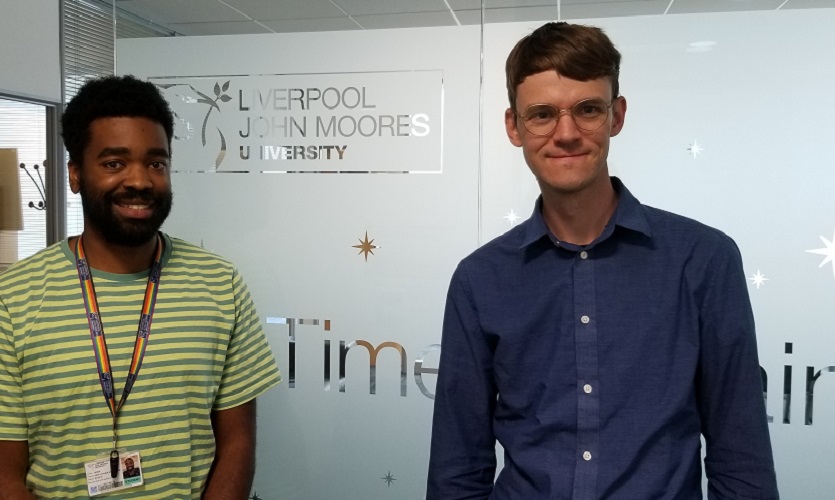PhD student K-Ryan discovers rare supernova

Astrophysics research student K-Ryan Hinds had to have his wits about him and Einstein’s theories handy when a fantastically rare event occurred on the night shift for the Zwicky Transient Facility, a major international research project.
K-Ryan was hunting for supernovas - powerful explosions that occur when a star dies. During a typical night K-Ryan might expect to discover a dozen or so such explosions. But one from that night, stood out.
The line of sight to this explosion passed directly through a massive galaxy, whose gravity bent and deflected its light in a phenomenon astronomers call "gravitational lensing".
“When we analysed it, the light appeared to be coming from four different directions, which is the result of it being refracted by gravity,” explained K-Ryan, a second-year PhD student.
“When something really big happens, it’s all hands-on deck" - K-Ryan Hinds, PhD student, LJMU
K-Ryan and his supervisor Dr Daniel Perley are authors in a paper published today (12 June, 2023) in Nature Astronomy, which describes the event – only the third recorded occurrence of a ‘lensed’ supernova.
“When something really big happens, it’s all hands-on deck from a large cohort of collaborators all around the world and so to be a part of that was really unique at such an early stage in my career,” said K-Ryan.
“This is my first publication in a big journal like Nature and so to be involved from the start is incredible.”
Dr Perley, a reader at the Astrophysics Research Institute, explained: “Every night one member of the team looks at the data stream to see what new sources have shown up, and if a source is bright enough we schedule it for more observations on a different telescope. K-Ryan was lucky enough to be in the hotseat and he did all the data analysis from the Liverpool Telescope to contribute to the paper.”
“We couldn't see the four separate images initially as they were all smeared together, but the object was just way too bright for something as far away as our spectroscopy told us. We also knew there was a galaxy there that could be a candidate to bend the light gravitationally.
"The galaxy acts as a gravitational lens – a bit like a cosmic magnifying glasses, creating multiple light paths, visible at different angles in the sky.”
The discovery is an intriguing breakthrough in our ability to explore how galaxies warp the surrounding space and play a crucial role in measuring cosmic distances. The configuration of multiple images in this case was predicted by Albert Einstein's theory of general relativity.
The event was initially detected by the Zwicky Transient Facility at Palomar Observatory and by NASA’s Hubble Space Telescope. Hinds and Perley immediately scheduled the Liverpool Telescope for extensive follow-up observations, which played an important part in the analysis.
Professor Ariel Goobar, director of the Oskar Klein Centre at Stockholm University, and principal author on the paper, said: "The discovery not only showcases the remarkable capabilities of modern astronomical instruments but also represents a significant step forward in our quest to understand the fundamental forces shaping our universe."
“Strongly lensed supernovae offer astronomers a unique opportunity to explore the properties of the inner cores of galaxies, including dark matter. Furthermore, lensed supernovae are promising tools to refine models describing the expansion of the universe.”
Collaborating institutions include Caltech, Cambridge, Humboldt Berlin, Lyon and Liverpool John Mores University.
-The paper - SN Zwicky: uncovering a population of gravitational lens galaxies with magnified standard candles" is published in Nature Astronomy.
Pictured: K-Ryan Hinds (left) and Dr Daniel Perley.


